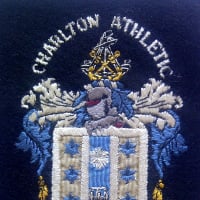100 Years of Charlton as a Football League side - articles from the programme

This article first appeared in the Wigan Programme.
We'll add more a little while after they have appeared in print.
We're doing an article for every home league programme so if you fancy penning 800 words let us know
---------------------------
Before the Flood
Ben Hayes and Paul Baker
This season the Charlton Athletic Museum will be contributing articles celebrating the centenary of the club’s membership of the Football League.
Charlton joined the league for the 1921/22 season and played their first league game on 27 August 1921. We’ll be talking about that in the Crewe programme but for now we want to set the scene because the Addicks have a significant history going back before we joined what is now called the EFL.
By today’s reckoning, Charlton started out as an U16 side but in 1905 such distinctions didn’t exist and working class boys, such as our founders, left school at 14, often to learn trades in the many local factories or work on the river Thames. The lads played against adult sides but were hugely successful, winning their ever higher level local leagues eight years in a row until the call to play “the greater game” overseas lead to the club closing down during World War One.
After reforming at the end of the great war the club took a series of momentous decisions. In 1919 they moved to the Valley and a year later turned professional. For the 1920/21 season the Addicks moved up to the Southern League, once as prestigious as the football league but by then losing many of its members to the formally majority northern and midland based football league.

As the fixture list from the 1920/21 handbook shows Charlton were now playing far further outside of London and Kent than they had before. A fixture list comprising West Ham, Brighton, Norwich and Portsmouth sounds impressive but these were mainly reserve teams, those clubs having already jumped ship for the football league.
There were other first teams in the league such as Chatham, Thornycrofts (a works team from Southampton), Gillingham and a club we’ll be talking about soon, Catford Southend. Our final game of the season and so our final first team league match as a non-league club was against Boscombe FC. A few years later they too joined the league and changed their name to become Bournemouth and Boscombe FC and now AFC Bournemouth.
The report from the Kentish Independent is worth reproducing for its wonderful language and for how it shows that at the time its significance as the end of the club’s first era was unknown.
Despite the unsettled weather, there were fully 3,500 spectators present at Charlton on Saturday last, when the “Reds” met and defeated Boscombe, in a Southern League game, by 5-1. The football played was of a very high order, despite the slippery nature of the pitch, and Charlton gained a well-merited victory in which they outplayed their opponents. During the first half, Smith, Upex and Mills scored for Charlton, while Smith netted for the visitors. On resuming the Boscombe goal had narrow escapes, and the defenders were hard pressed. Smith was very evasive, and a pretty piece of work between Upex and Green ended in the latter just missing by inches. It was at this period that several infringements for offside occurred, first Charlton and then Boscombe being the culprits, but the crowd seemed to enjoy the curious situation. Jewhurst, who was playing a sterling game, was brought down heavily just outside the penalty area. Green took the free kick and scored a capital goal through a crowd of players. The inside-right fully deserved this success, for he had come near scoring on several occasions. The match was almost finished when Dunn sent the ball to Mills, who in turn passed to Smith, who beat his opponent and gave Upex a splendid opening. The latter easily beat the goalkeeper. Team:-
Charlton Athletic – Barnes; Mitchell and Goodman; Dowling, Jewhurst and Dunn; Kingsley, Green, Upex, Smith and Mills.
That summer the football league accepted the applications of two Athletics, Charlton and Aberdare and created a division three north and south. That U16 side were now going to be playing with the big boys
Ben Hayes and Paul Baker are trustees of the Charlton Athletic museum, an independent charity that aims to preserve and promote the heritage of the club. They can be contacted at CAFChistorian@gmail.com or on twitter @chathmuseum
Comments
-

1 -

2 -
Second article appeared in the Crewe programme to coincide with the 100th Anniversary game.
Personally, I think the club could have made a lot more of this season. Not even a special shirt or a badge on the shirt to mark it.
2 -

3 -
Brilliant stuff.
Incidentally, trivial point, Boscombe became Bournemouth and Boscombe Athletic.
I always remember as a kid it was abbreviated to Bournemouth & BA, before they were renamed in 1971.
2 -
Wyn Grant's VOTV168 story of Charlton's election to the Football League in 1921 is now available to read online at www.votvonline.com too.0


